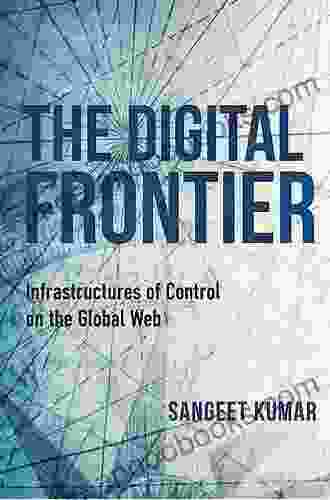Infrastructures of Control on the Global Web: Framing the Global

The internet has become an essential part of our lives. We use it to communicate with friends and family, to learn new things, to do our jobs, and to shop. But the internet is not a neutral space. It is shaped by the infrastructures of control that govern how we access and use it.
4 out of 5
| Language | : | English |
| File size | : | 4222 KB |
| Text-to-Speech | : | Enabled |
| Screen Reader | : | Supported |
| Enhanced typesetting | : | Enabled |
| Print length | : | 330 pages |
These infrastructures of control are often invisible to us. They are the technical systems, the legal frameworks, and the social norms that determine who can access the internet, what they can do on it, and how their activities are monitored and controlled.
In this book, I examine the infrastructures of control that shape the global web. I argue that these infrastructures frame the way we experience and interact with the world online. They determine what information we see, how we communicate with others, and what kinds of activities we are able to engage in.
Chapter 1: The Technical Infrastructures of Control
The technical infrastructures of control are the physical and digital systems that make up the internet. These include the cables and routers that connect our devices to the network, the servers that host websites and applications, and the software that controls how data is transmitted and processed.
The technical infrastructures of control are not neutral. They are designed and built by specific actors with specific interests. These actors include governments, corporations, and non-profit organizations. Each of these actors has its own agenda for how the internet should be used and controlled.
For example, governments may use technical infrastructures of control to block access to certain websites or to monitor online activity. Corporations may use technical infrastructures of control to track users' online behavior and to target them with advertising. Non-profit organizations may use technical infrastructures of control to provide educational resources or to promote social change.
The design and implementation of technical infrastructures of control have a profound impact on our ability to access and use the internet. They can determine whether we are able to communicate with each other freely, whether we are able to access information that is critical of the government or corporations, and whether we are able to participate in online activities without fear of surveillance or censorship.
Chapter 2: The Legal Infrastructures of Control
The legal infrastructures of control are the laws and regulations that govern the internet. These laws and regulations determine who is responsible for online content, how data can be collected and used, and what kinds of activities are prohibited online.
The legal infrastructures of control are not neutral. They are written and enforced by specific actors with specific interests. These actors include governments, corporations, and non-profit organizations. Each of these actors has its own agenda for how the internet should be used and controlled.
For example, governments may use legal infrastructures of control to criminalize certain types of online speech or to require internet service providers to retain user data for law enforcement purposes. Corporations may use legal infrastructures of control to protect their intellectual property or to limit competition. Non-profit organizations may use legal infrastructures of control to promote privacy or to protect children from online harm.
The design and implementation of legal infrastructures of control have a profound impact on our ability to access and use the internet. They can determine whether we are able to express ourselves freely online, whether we are able to access information that is critical of the government or corporations, and whether we are able to participate in online activities without fear of legal reprisal.
Chapter 3: The Social Infrastructures of Control
The social infrastructures of control are the norms and expectations that govern how we use the internet. These norms and expectations are shaped by a variety of factors, including our culture, our education, and our personal experiences.
The social infrastructures of control are not neutral. They are shaped by specific actors with specific interests. These actors include governments, corporations, and non-profit organizations. Each of these actors has its own agenda for how the internet should be used and controlled.
For example, governments may use social infrastructures of control to promote patriotism or to discourage dissent. Corporations may use social infrastructures of control to promote their products or to discourage competition. Non-profit organizations may use social infrastructures of control to promote social change or to protect children from online harm.
The design and implementation of social infrastructures of control have a profound impact on our ability to access and use the internet. They can determine whether we feel comfortable expressing ourselves online, whether we are able to access information that is critical of the government or corporations, and whether we are able to participate in online activities without fear of social stigma or ostracism.
The infrastructures of control that shape the global web are complex and ever-changing. They are the product of a variety of actors with competing interests. These actors are constantly trying to shape the internet in their own image, and the outcome of their struggle will determine how we experience and interact with the world online.
It is important to be aware of the infrastructures of control that shape the global web. By understanding how these infrastructures work, we can better understand how the internet is used and controlled, and we can make more informed choices about how we use it ourselves.
4 out of 5
| Language | : | English |
| File size | : | 4222 KB |
| Text-to-Speech | : | Enabled |
| Screen Reader | : | Supported |
| Enhanced typesetting | : | Enabled |
| Print length | : | 330 pages |
Do you want to contribute by writing guest posts on this blog?
Please contact us and send us a resume of previous articles that you have written.
 Book
Book Novel
Novel Page
Page Chapter
Chapter Text
Text Story
Story Genre
Genre Reader
Reader Library
Library Paperback
Paperback E-book
E-book Magazine
Magazine Newspaper
Newspaper Paragraph
Paragraph Sentence
Sentence Bookmark
Bookmark Shelf
Shelf Glossary
Glossary Bibliography
Bibliography Foreword
Foreword Preface
Preface Synopsis
Synopsis Annotation
Annotation Footnote
Footnote Manuscript
Manuscript Scroll
Scroll Codex
Codex Tome
Tome Bestseller
Bestseller Classics
Classics Library card
Library card Narrative
Narrative Biography
Biography Autobiography
Autobiography Memoir
Memoir Reference
Reference Encyclopedia
Encyclopedia Monica Sweeney
Monica Sweeney Ratan Kaul
Ratan Kaul Rosie Thomas
Rosie Thomas Mike Mcleod
Mike Mcleod Upton Sinclair
Upton Sinclair Pamela Levene
Pamela Levene Robert G Watkins
Robert G Watkins Mathieu Rigouste
Mathieu Rigouste Mark Minard
Mark Minard Susan Young
Susan Young Matthew Kennedy
Matthew Kennedy Peta Mathias
Peta Mathias Markus Maeder
Markus Maeder Neil Firth
Neil Firth Owen Bennett
Owen Bennett Samuel Peralta
Samuel Peralta Oprah Winfrey
Oprah Winfrey Megan Gross
Megan Gross Reed Hundt
Reed Hundt Will Hutchison
Will Hutchison
Light bulbAdvertise smarter! Our strategic ad space ensures maximum exposure. Reserve your spot today!

 Herman MitchellUnveiling the Enchanting Essence of Japanese Culture and Heritage: A Literary...
Herman MitchellUnveiling the Enchanting Essence of Japanese Culture and Heritage: A Literary...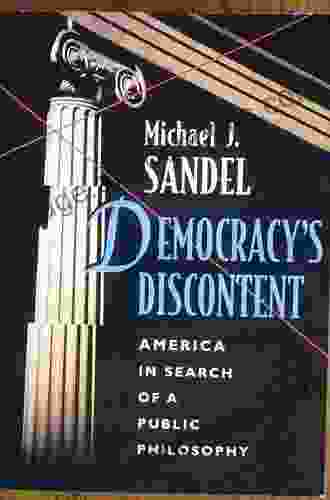
 Esteban CoxAmerica In Search Of Public Philosophy: A Search For Meaning In A Postmodern...
Esteban CoxAmerica In Search Of Public Philosophy: A Search For Meaning In A Postmodern...
 Ibrahim BlairIn Praise of the Teacher of Teachers: A Monumental Ode to the Unsung Heroes...
Ibrahim BlairIn Praise of the Teacher of Teachers: A Monumental Ode to the Unsung Heroes... Ervin BellFollow ·2.5k
Ervin BellFollow ·2.5k Gerald BellFollow ·4.2k
Gerald BellFollow ·4.2k Jorge AmadoFollow ·8.5k
Jorge AmadoFollow ·8.5k Forrest ReedFollow ·13.9k
Forrest ReedFollow ·13.9k Albert CamusFollow ·10.4k
Albert CamusFollow ·10.4k Jack LondonFollow ·4.8k
Jack LondonFollow ·4.8k Sam CarterFollow ·18.7k
Sam CarterFollow ·18.7k Sean TurnerFollow ·16.1k
Sean TurnerFollow ·16.1k
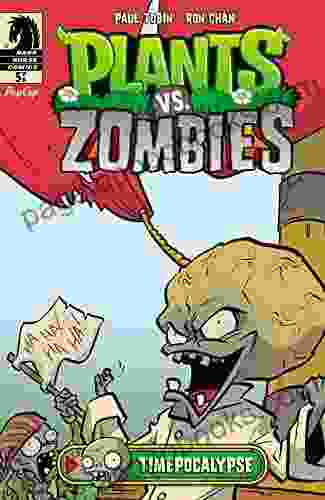
 Ben Hayes
Ben HayesJourney into the Verdant Realm of "Plants vs. Zombies:...
Immerse Yourself in an Epic Battle for...

 Edward Reed
Edward ReedUnveiling the Allure of Modish Crochet Hats Annie...
In the realm of fashion and...

 Jaylen Mitchell
Jaylen MitchellHalf Moon Bay: An Unforgettable Adventure Awaits in Aj...
Prepare yourself...
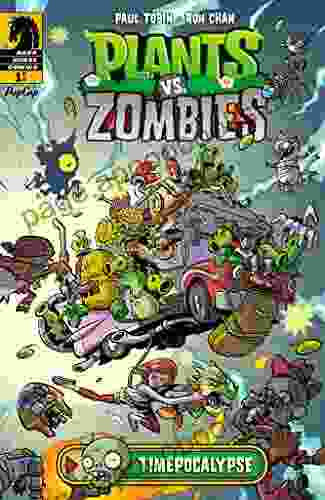
 Dan Brown
Dan BrownUnleash the Plant-Powered Apocalypse: Dive into Paul...
Prepare yourself for an epic showdown where...

 Efrain Powell
Efrain PowellStolen Summer: Nora Sommer's Enthralling Caribbean...
Escape to a World of...
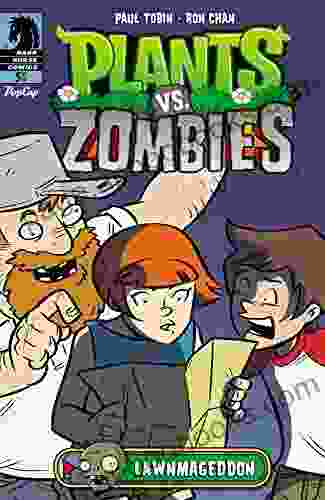
 Steven Hayes
Steven HayesPlants vs. Zombies: Lawnmageddon - The Ultimate Battle...
Prepare for the ultimate battle between plants...
4 out of 5
| Language | : | English |
| File size | : | 4222 KB |
| Text-to-Speech | : | Enabled |
| Screen Reader | : | Supported |
| Enhanced typesetting | : | Enabled |
| Print length | : | 330 pages |


